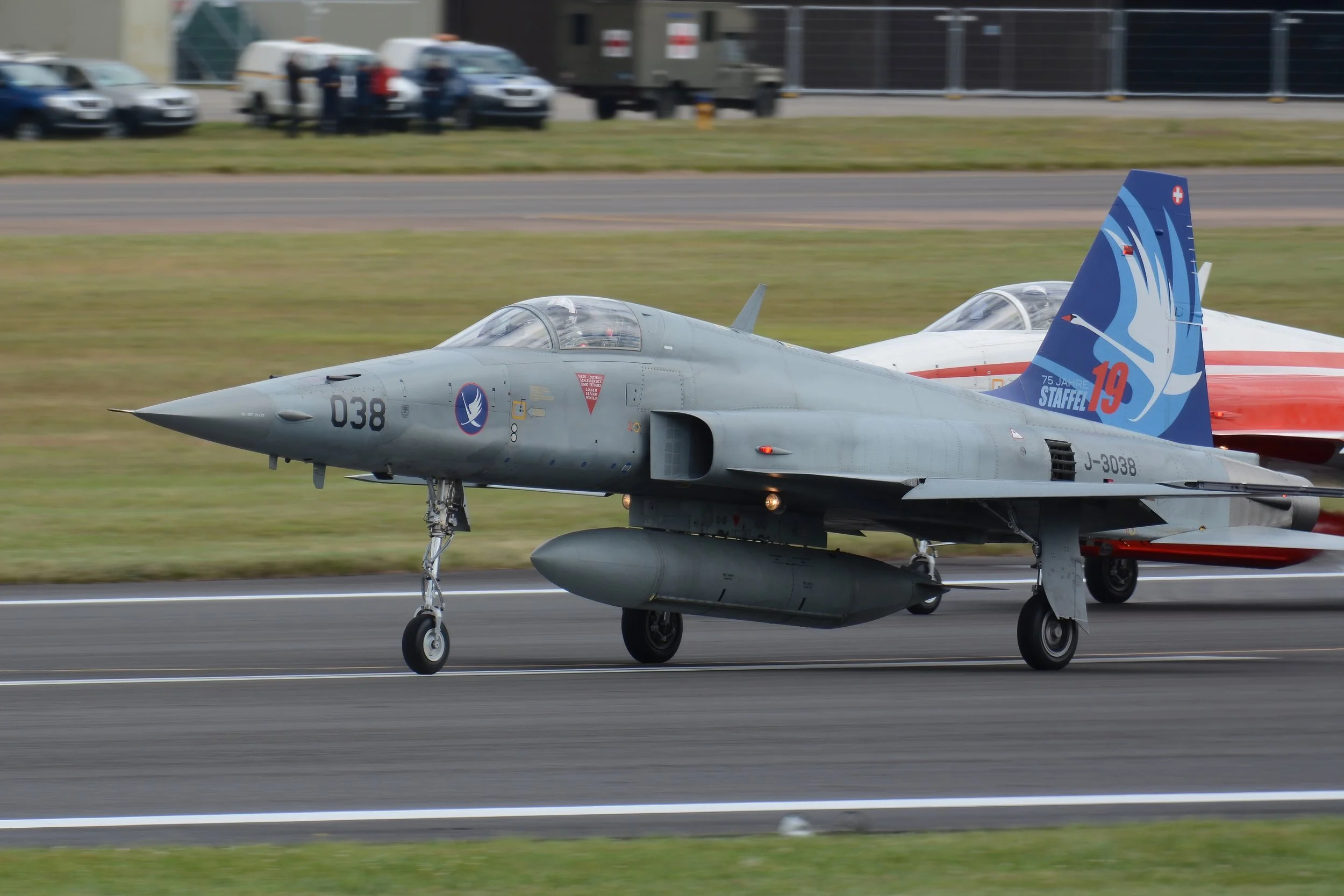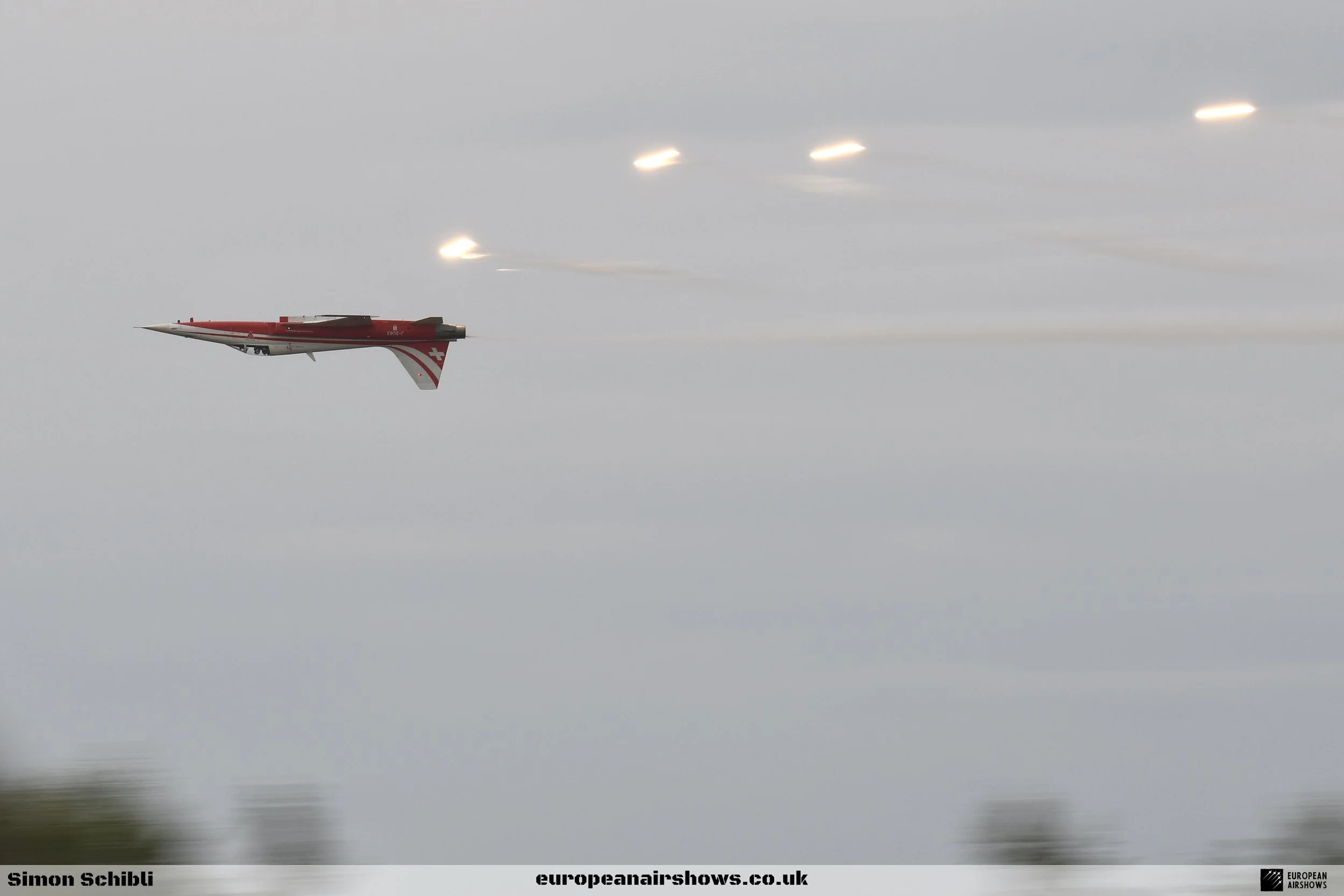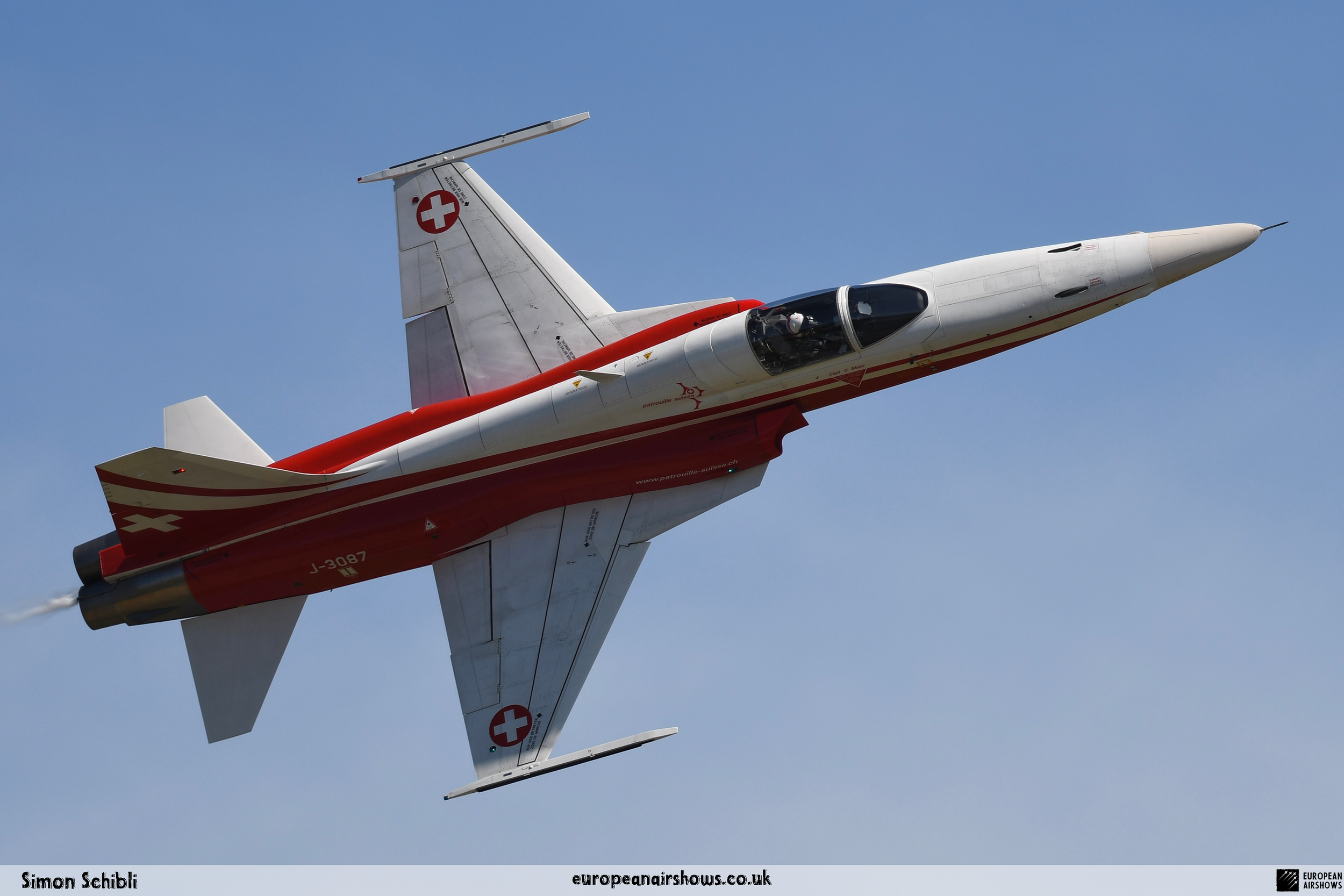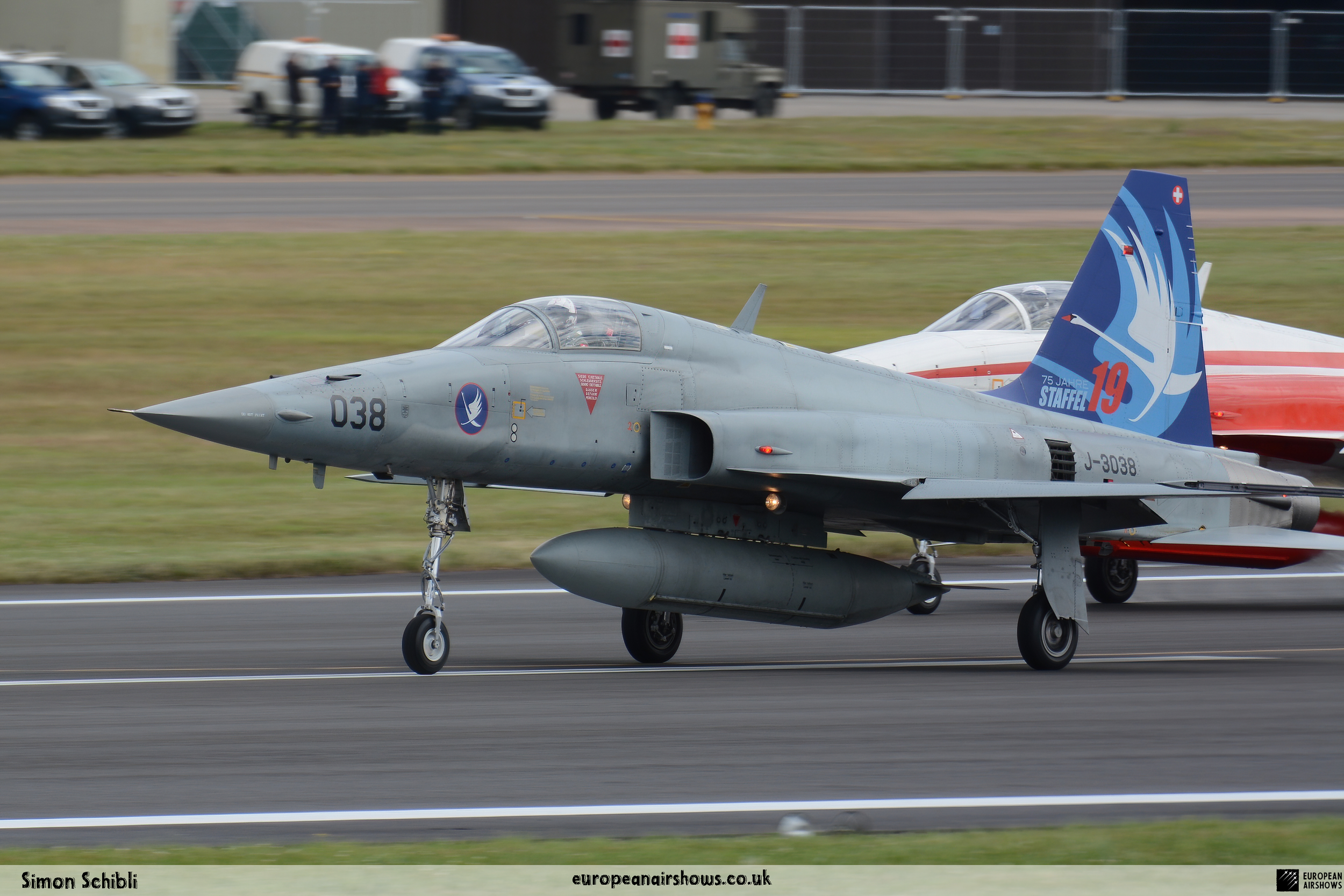
April 30 / Northrop F-5 first flight
First Flight 30 April 1959
Northrop F-5
The Northrop F-5 is a family of supersonic light fighter aircraft initially designed as a privately funded project in the late 1950s by Northrop Corporation. There are two main models, the original F-5A and F-5B Freedom Fighter variants and the extensively updated F-5E and F-5F Tiger II variants. The design team wrapped a small, highly aerodynamic fighter around two compact and high-thrust General Electric J85 engines, focusing on performance and a low cost of maintenance. Smaller and simpler than contemporaries such as the McDonnell Douglas F-4 Phantom II, the F-5 cost less to procure and operate, making it a popular export aircraft. Though primarily designed for a day air superiority role, the aircraft is also a capable ground-attack platform. The F-5A entered service in the early 1960s. During the Cold War, over 800 were produced through 1972 for US allies. Though at the time the United States Air Force (USAF) did not have a need for a light fighter, it did procure approximately 1,200 Northrop T-38 Talon trainer aircraft, which was based on Northrop's N-156 fighter design.
After winning the International Fighter Aircraft Competition, a program aimed at providing effective low-cost fighters to American allies, in 1972 Northrop introduced the second-generation F-5E Tiger II. This upgrade included more powerful engines, larger fuel capacity, greater wing area and improved leading edge extensions for better turn rates, optional air-to-air refuelling, and improved avionics including air-to-air radar. Primarily used by American allies, it remains in US service to support training exercises. It has served in a wide array of roles, being able to perform both air and ground attack duties; the type was used extensively in the Vietnam War. A total of 1,400 Tiger IIs were built before production ended in 1987. More than 3,800 F-5s and the closely related T-38 advanced trainer aircraft were produced in Hawthorne, California. The F-5N/F variants are in service with the United States Navy and United States Marine Corps as adversary trainers. Over 400 aircraft were in service as of 2021.
The F-5 was also developed into a dedicated reconnaissance aircraft, the RF-5 Tigereye. The F-5 also served as a starting point for a series of design studies which resulted in the Northrop YF-17 and the F/A-18 naval fighter aircraft. The Northrop F-20 Tigershark was an advanced variant to succeed the F-5E which was ultimately canceled when export customers did not emerge.
The design effort was led by Northrop vice president of engineering and aircraft designer Edgar Schmued, who previously at North American Aviation had been the chief designer of the successful North American P-51 Mustang and F-86 Sabre fighters. Schmued recruited a strong engineering team to Northrop.
In December 1953, NATO issued NBMR-1, calling for a lightweight tactical fighter capable of carrying conventional and nuclear weapons and operating from rough airfields. In late 1954, a Northrop team toured Europe and Asia to examine both the NBMR-1 and the needs of SEATO members. From this tour, Schmued gave his team the goal of reversing the trend in fighter development towards greater size and weight in order to deliver an aircraft with high performance, enhanced manoeuvrability, and high reliability, while still delivering a cost advantage over contemporary fighters. Recognizing that expensive jet aircraft could not viably be replaced every few years, he also demanded "engineered growth potential" allowing service longevity in excess of 10 years.
The design began to firm up in 1955 with the introduction of the General Electric J85 turbojet engine. Originally developed for McDonnell's ADM-20 Quail decoy for use on the Boeing B-52 Stratofortress, the J85 had a thrust-to-weight ratio of 6.25 to 7.5 depending on the version, giving it a notable advantage over contemporaries such as the 4.7 ratio of the J79 engine used in the F-4 Phantom.








